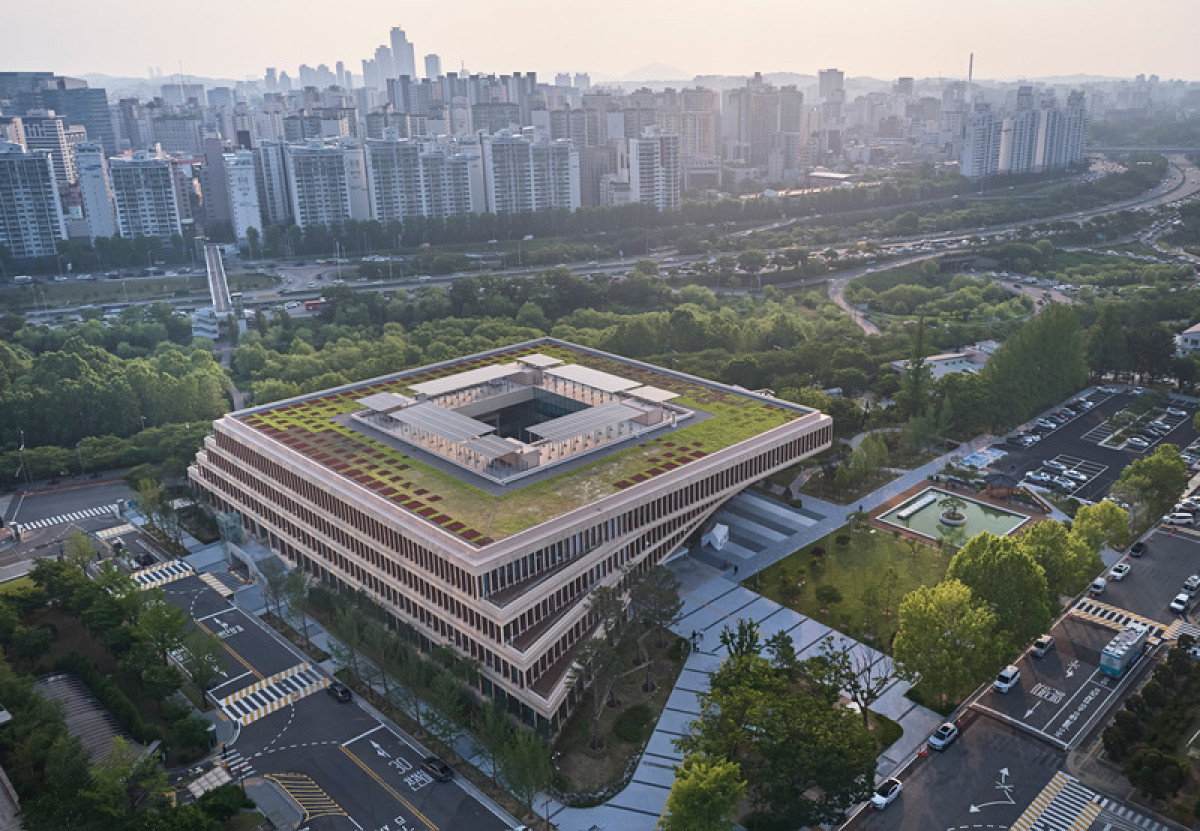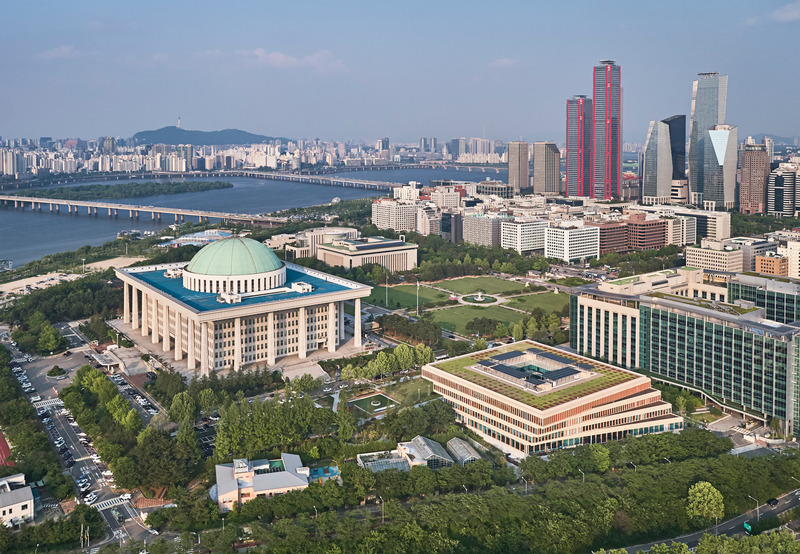19 Jun 2023

South Korean firm Haeahn Architecture, in collaboration with New York-based H Architecture, was recently named winner of a 2023 Architizer A+Awards Popular Choice prize in the Government & Civic Buildings category for their National Assembly Communication Building project in Seoul, South Korea.
The National Assembly Communication Building, located inside the National Assembly complex, known as the cradle of Korean democracy, was planned as an open space reflecting a pluralistic ideology while embracing the order of existing components of the complex.

A flexible space for a public purpose
To address the building's purpose as a place for multiple user groups, the National Assembly Communication Building required not only systematic security systems but also spatial flexibility and expandability. The firm therefore embarked on a plan to build “a flexible building containing open places”, where public daily life would naturally occur, in addition to the formal monumental nature of the National Assembly area.
Implementing a green space open to a flexible area
The project site was a green space surrounded by lush trees, approximately 10-12 meters in height on average. To reflect that status, the firm established a public green space aimed at making the building familiar and low enough, on a human scale, by ensuring that the height would not exceed four stories. The result is that the building remains buried among green trees, with the rooftop also created as a green zone to connect the flow of nature. Traces of a forest, formerly used as a green belt, were left, along with Zelkova trees, which were as old as the history of the National Assembly Building itself. In doing so, the firm assured that the monumental landscape of the National Assembly area would be well conserved.
Creating a systematic space through flexible layers
In consideration of the characteristics of the building, where various functions and users coexist, the firm aimed to increase spatial usability and work efficiency, while maintaining the independence of each facility by distributing functions per floor through a horizontal zoning plan. The four cores surrounding the atrium provide a traffic flow system for the user and a security system for the facility. In addition, by applying an optimized structural modular system to the integrated workspace composition, functional space and workspace were composed to respond flexibly to the changing demand for space in the future.
Making a space of communication with flexible crevices
The architects paid close attention to the building's representation of pluralistic democracy, and its embrace of multiple functions for the public, press, parliamentary politics, and administration. Accordingly, they created a spatial identity under the theme of “Encounter and Communicate”, ensuring that user groups would support sound democracy and the national vision through cooperation and dialogue. Various spaces were designed for encounters and communication in the building and common spaces and rest areas were established between each functional space to continuously connect the building, both indoors and outdoors. Such spaces were designed as places of relaxation and sharing, enabling communication between people, between the spaces, and between nature and its urban surroundings. The result is that the new National Assembly Communication Building is an open space where lively communication will take place for many years to come.
Technical sheet